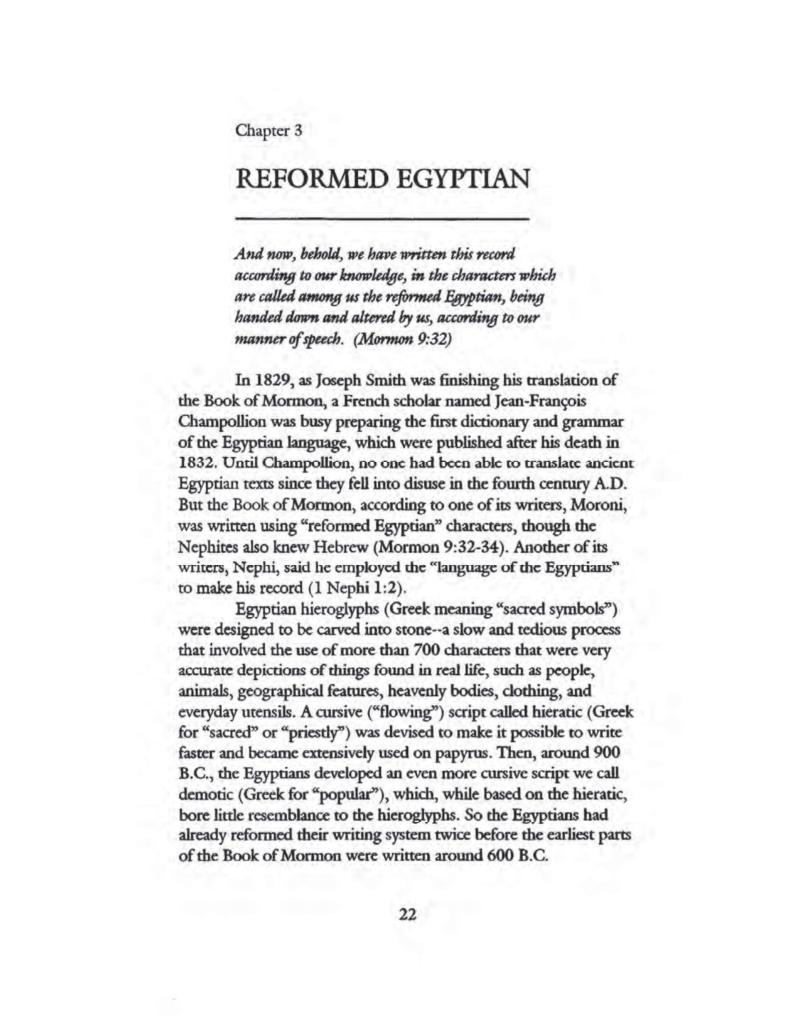John A. Tvedntes discusses various texts written in a Semitic language but using an Egyptian script.
- Type
- Book
- Hearsay
- DirectSecondary
- Reference
John A. Tvedntes, The Most Correct Book: Insights From a Book of Mormon Scholar (Salt Lake City: Cornerstone Publishing & Distribution, Inc., 1999), 23-24
- Scribe/Publisher
- Cornerstone
- Audience
- Reading Public
- Transcription
. . . a number of northwest Semitic texts (related to Hebrew) are included in three Egyptian magical papyri from the fourteenth and thirteenth centuries B.C., the London Magical Papyrus, the Harris Magical Papyrus, and Papyrus Anastasi I. Another Egyptian document, Ostracon 25759, from the early eleventh century B.C., also has a Semitic text that reads like Hebrew but is written in Egyptian characters.
Papyrus Amherst 63, a document written in Egyptian demotic and dating to the second century B.C., was found in an earthen jar at Thebes, Egypt, during the second half of the nineteenth century. Though the script is Egyptian, the underlying language is Aramaic, which is closely related to Hebrew. Among the writings included in the religious text is a paganized version of Psalms 20:2-6. Here, then, we have a Bible passage, in its Aramaic translation, written in late Egyptian characters.
In 1967, Israeli archaeologists discovered at the ancient site of Arad an ostracon (pottery fragment) from shortly before 600 B.C., the time of Lehi. The text on the ostracon is written in a combination of Egyptian hieratic and Hebrew characters, but can be read entirely as Egyptian. Of the seventeen words in the text, ten are written in hieratic and seven in Hebrew. This discovery suggests that when Lehi’s son Nephi spoke of writing in a language consisting of “the learning of the Jews and the language of the Egyptians,” he may have used such a combination script. Two more examples of combination Egyptian-Hebrew scripts from the same time period were discovered in the northern Sinai peninsula during the late 1970s.
- Source Link
- https://archive.bookofmormoncentral.org/content/most-correct-book-insights-book-mormon-scholar
- Citations in Mormonr Qnas
The B. H. Roberts Foundation is not owned by, operated by, or affiliated with the Church of Jesus Christ of Latter-day Saints.

